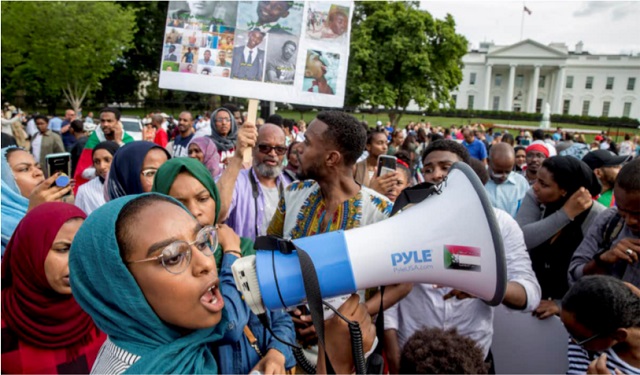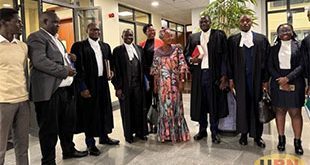
Sudanese security forces violently removed a protest camp in the capital, Khartoum, on June 3.
SUDAN | Eric Keels and Joshua Lambert | In addition to brutally beating the pro-democracy protesters, government troops also fired on the demonstrators. Early numbers suggest that at least 61 people died during the week, though that number may grow in the coming days.
The deadly violence occurred after months of citizen protests against the violent and repressive rule of the longtime ruler of Sudan, President Omar al-Bashir. Sudan’s military removed him from office on April 11.
Soon after the coup, talks began about the transition of power to civilian rule. There were high hopes among democracy advocates that a new civilian government would soon take control of the state.
As scholars of armed conflict, we believe that such reforms are likely to be put on hold following this episode of government repression. The findings from our forthcoming research on coups around the world suggest that this state-sponsored brutality may just be the start of a more deadly crackdown.
A brief history
Since coming to power through a military coup in 1989, al-Bashir ruled Sudan with an iron fist. The government routinely engaged in widespread atrocities as a way to cripple dissent.
This violence was largely directed at the disenfranchised southern and western portions of the country, in Darfur and what is now South Sudan. Political power is largely concentrated in the areas surrounding Khartoum.
After years of international economic sanctions in response to those human rights abuses, in 2018 large groups of citizens in Khartoum, as well as in municipalities surrounding Khartoum, began to demonstrate and call for al-Bashir to step down from power.
Though the military initially responded by violently suppressing the protests, the Sudanese Army finally acquiesced to popular demands and arrested al-Bashir.
This recent escalation of violence is not the first instance of indiscriminate violence by the new military junta in Sudan. On May 15, soon after the April coup, military forces opened fire on protesters in Khartoum.
Sudanese Americans rally outside the White House in Washington, Saturday, June 8, 2019, in solidarity with pro-democracy protests in Sudan. AP Photo/Andrew Harnik
Perceived threats
Our research suggests that there may be greater violence against Sudanese civilians in the coming weeks.
We study when and where governments respond to threats through the use of state-sponsored violence – specifically, killings by the government. Potential threats to government control may be external, such as rebel attacks, or they may be internal, such as military coups.
A government’s perception of these threats is intimately tied to their control of the capital city. When governments believe that there is a risk that they may lose control of the capital, we have found that government elites respond with the use of greater targeted violence toward civilians.
While coups themselves are rare events, the threat of a coup, and leaders’ behavior to avoid it, are more common in fragile states. Leaders who are concerned about being unseated may purge the capital of perceived dissidents as the possibility of a coup emerges.
This was the case in the 1960s and the early 1980s in Guatemala, as the Guatemalan government killed thousands of suspected dissidents when they believed the risk of a coup was greatest. Similarly, the Derg regime in Ethiopia killed over 10,000 people in the late 1970s, when the government felt threatened by the growing terrorist campaign inside Addis Ababa.
 The Independent Uganda: You get the Truth we Pay the Price
The Independent Uganda: You get the Truth we Pay the Price



